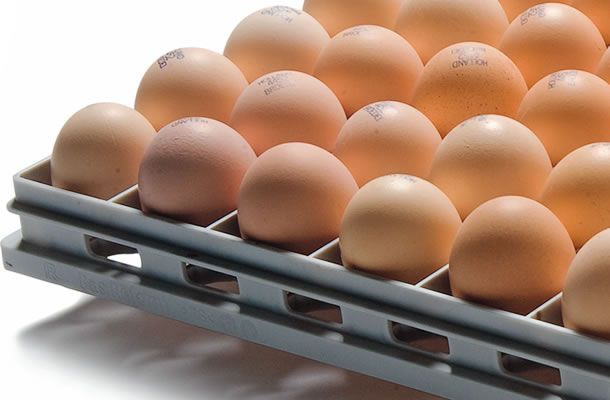Hatching egg transport
Tags: Egg handling | Whitepaper
, 27 August 2012

Breeder farms are often situated away from the hatchery. The distance between the two sites therefore becomes an important consideration when planning the transfer of eggs to the hatchery. Typically, deliveries vary from daily to not less than twice weekly, as increased storage time has a negative impact on hatchability and chick quality.
Egg transport is generally by truck, although when importing hatching eggs, air transport may also be used. When flying eggs, it is worth remembering that delays can occur during transfer from aircraft to truck and while waiting for customs clearance.
Because hatching egg transport is actually a period of transition from the farm store to the hatchery egg store, it is important that climatic conditions are kept optimal, to maintain hatching potential as much as possible. Ideally, temperature inside the truck should be equal to temperature in the farm store.
The cooling down of newly loaded eggs should always be avoided, especially if the vehicle is already loaded with eggs from other farms. When eggs cool, the volume of albumen and yolk shrinks, thus increasing air cell volume, which will allow contaminated air to be sucked into the egg.
Conversely, if the temperature in the truck is higher than in the store, the risk of ‘sweating’ (condensation forming when the colder surface of the egg is exposed to humid air) increases. Even when store and truck temperatures are equal, sweating can still occur during loading and unloading, especially on warm and humid days. In such a case, a higher on-farm storage temperature of 23 ˚C instead of the generally recommended 18 - 20 ˚C can be considered. Bourassa et al (2003) found that this will produce equally good hatching results, while minimising sweating during loading.
Egg temperature can change rapidly when loading, especially when air velocity is high. This mainly affects eggs on plastic or setter trays, but it is also true for eggs on pulp trays - placed at the side of a buggy. Using buggy bags can delay temperature changes in a situation like this. But avoid direct sunlight on the bags! In a very short time, the temperature under the plastic can rise to 5o ˚C!
To avoid negative affects on embryo vitality during transportation, sudden temperature changes, shocking and jolting should be avoided at all times.
Advice
- Adjust vehicle temperature to that of the storage rooms of all supplying farms. The hatchery should play a coordinating role.
- Reduce the risk of sweating by reducing relative humidity in the vehicle. Providing transport time is not longer than 12 - 24 hours - the effect on the quality of hatching eggs is negligible.
- Avoid sudden temperature changes during loading and unloading. Connect the truck directly to the storage room whenever possible or consider using buggy bags - especially in situations of high air velocity and low air temperature. Always avoid direct sunshine and watch for unwanted condensation forming under these bags.
- Ensure a constant and uniform climate during egg transport.
- Always avoid unnecessary delays.
- Avoid shocks and jolts during loading and transport - use trucks with good suspension and trolleys with shock absorbing wheels. Maintain access roads to farms and hatchery in good condition.
- Adequately support eggs in well designed trays without sharp edges.
- Do not use sloppy trays and avoid overstacking.
- Always transport eggs small end down, to avoid loose air cells.
- Use temperature loggers during transport to record any temperature fluctuations.
- Take internal egg temperatures at different locations within each batch received at the hatchery, to check temperature conditions during transport.
- After transportation, rest the eggs for at least 12 hours before starting incubation, immediate setting will increase early embryonic mortality.
- Clean and disinfect all transport equipment prior to any egg transport, to avoid pathogenic spread.
Written by Gerd de Lange
Senior Poultry Specialist
I welcome your feedback on this article - and if you require any additional information, please don't hesitate to contact me.